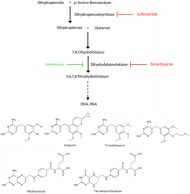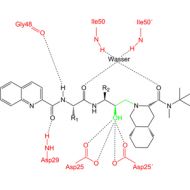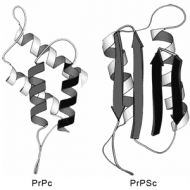INFECTIOUS DISEASES
New and old infectious diseases
The immune system is constantly developing and is thus able to react to new challenges again and again. Infectious diseases are caused by a multitude of different pathogens like bacteria, fungi, viruses, or protozoa. Most of the diseases have an incubation time of several months up to years.
- What ways of infection do exist? Infectious diseases can be transmitted from human to human, from animal to human, or via food. Food infections are caused by microbially contaminated groceries or contaminated water.
- Can infectious diseases be avoided? Basically they can. Special precautions like safer sex, adapted consumption habits, special hygenical measures, or selected technological processes in the production of food can be applied.
- How dangerous are infectious diseases? All over the world infectious diseases are the most prevalent causes of death. Diseases like AIDS and tuberculosis are constantly advancing. HIV/Tuberculosis-co-infections are promoting one another – approximately 11 million adults are said to be infected with both viruses. Between one and two million people are killed by malaria every year. The WHO denoted malaria as well as HIV/AIDS and tuberculosis as one of the major challenges for the public health service.
- What factors influence the course and prognosis of infectious diseases? The course as well as the prognosis depends on the ability of the immune system to eliminate the causative organism. As supporting measures preventive vaccination or drugs – anti-effectives – can help. Anti-effectives are pharmaceuticals that are used for the treatment of infectious diseases. These are antibiotics – against bacteria, antiprotozoals – against protozoa, antimycotics – against yeasts and fungi, virostatics – against viruses, or antihelmintics – against worms.
- What are antibiotics? Natural metabolic products of fungi and bacteria that can kill other microorganisms even in low concentrations or prevent them from growing are used as medication in the treatment of bacterial infectious diseases. In a wider sense also substances with antimicrobial effect that cannot be found in nature, are extracted half-synthetically, full-synthetically, or by genetic engineering are called antibiotics.
- What basical ways of attack are available? A damage of bacteria is among other things possible if a substance engages with a metabolic process that can be found especially in cells of bacteria but not in human cells. How an antibacterially active ingredient can attack is depicted in ill. 5 in a highly schematically simplified cell of a bacterium.
- What are the major challenges? Since antibiotics are applied bacterial infectious diseases have lost much of their threat in human medicine. Nevertheless leads the growth of resistances to a growing ineffectiveness of some antibiotics. While a lot of bacterial infections have been well treatable over the last decades the situation is constantly changing for the worse because of the increase of resistances. This is why we need – even 80 years after the discovery of penicillin – new basic research approaches in this field although the medicamentous care was said to be guaranteed for a long time.
- How can resistances develop? The development of resistances leads to a reduction or neutralization of the effect of antibiotically active substances. Growing resistances can be understood as an adjustment to extreme environmental conditions. Microorganisms have a very short generation time, i.e. adjustments can develop quite quickly. Inactivating proteins, e.g. β-lactamases, specific changes in the target protein (mutations, posttranslational modifications, changes of amino acids), reduced absorption (changes of the cell wall, increased excretion), efflux-pumps, overproduction of the target protein, alternative metabolic pathways, increased rate of mutation (decreased error correction or so-called biofilms) or accumulation of the microorganisms in the mucilage-matrix are considered to be possible resistance mechanisms.
Expert’s knowledge for the broad public: The summaries that are presented here arise from public lecture series that were offered within the scope of the University of Hamburg / Food & Health Academy (FHA) in the years 2010 and 2012.
We are currently about to publish the lectures in book-form. This book will appeal in first place to students and teachers who are concerned with microbiology and the different branches of the field of Life Sciences and who want to get a general idea of some important infectious diseases, the development of new pharmaceuticals, the development of resistances as well as possibilities to prevent infections via food stuffs.
In addition the broad interested public can also profit from this book because the respective contents are - just like the standard of the FHA demands - thoroughly worked up and presented comprehensibly by acknowledged experts.





